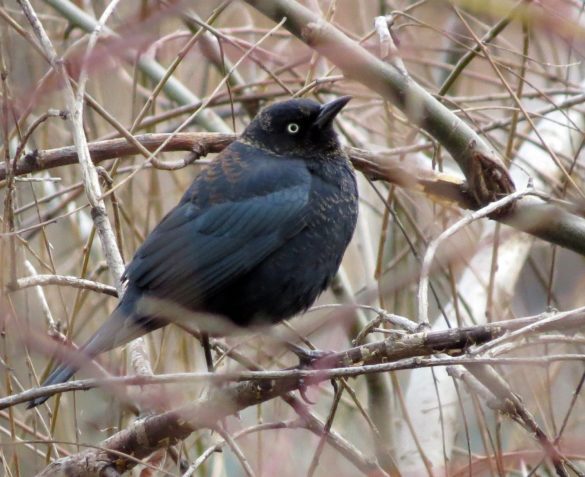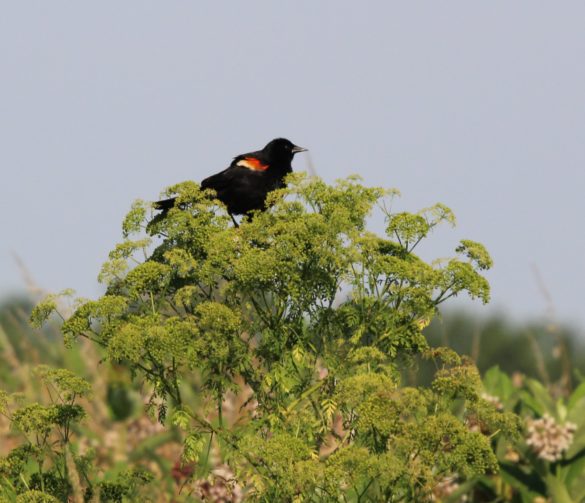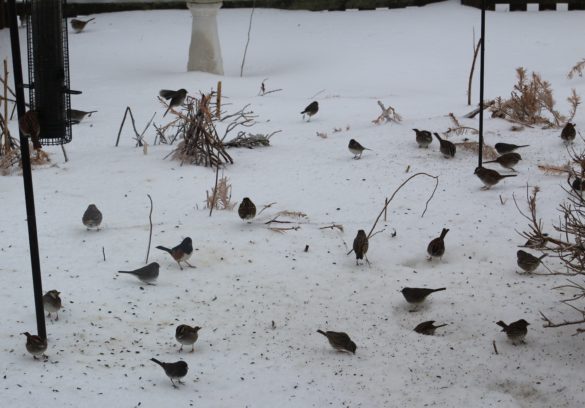A major analysis published last week (Rosenberg et al. 2019, Science, downloadable) makes depressing reading for anyone interested in birds or in nature in general. A team of leading North American researchers analyzed almost 50 years of data from multiple sources and calculated that about 3 billion birds (= 3 thousand million!) have been lost from the continent since the 1970s. This staggering total suggests that over 1 in 4 North American birds have disappeared in less than half a century. Some groups of birds have been hit especially hard, with over half (53%) of all grassland birds disappearing as more and more of their habitat is plowed under to make way for agriculture or development. Shorebirds are close to the hearts of many Delawareans since they famously stop to refuel in the Delaware Bay on their way north to breed and yet these are among the most strongly declining birds, with a drop of 37% in 50 years. The bejewelled warblers, those colorful songbirds which symbolize migration for many birders, have dropped by 38%.

Some of the report’s findings simply confirmed the sad stories recounted by long-time Delaware birders that species which used to be merely uncommon are now very hard to find, like the Rusty Blackbird. However, some of the other findings were much more surprising and perhaps more troubling because they revealed serious declines in groups of birds usually taken for granted as ‘common’ like blackbirds (44%), finches (37%) and sparrows (38%). It is probably not a coincidence that almost all of these species feed their nestlings on insects, another major taxon that has seen dramatic declines.

The report wasn’t all doom and gloom however. Waterbirds (ducks and geese) have shown a resurgence (+56%) thanks to better management and protection of wetland and marsh habitats based on millions of dollars raised by the sale of Duck Stamps to hunters and non-consumptive users as well as federal and state wildlife grants. Several birds of prey have also rebounded thanks in part to the ban on DDT, including a remarkable 300% increase in the numbers of the fish-eating Osprey. These success stories show that bird declines can be reversed if we act quickly enough to protect and preserve their habitats since the loss or degradation of their breeding, wintering or migratory habitats is the root cause of almost all bird declines.
Birds provide many ecological benefits like seed dispersal, pollination and control of arthropod pests but are also a source of everyday enjoyment for millions of North Americans who enjoy bird watching or feeding birds. Birds are also an excellent way to stimulate an interest in nature, especially among children, because they are active during the day and present in all four seasons, and many have colorful plumage or attractive songs. In short, birds are perhaps the most visible and recognizable component of most North American ecosystems, and if they are in such a serious decline then many other parts of the ecosystem probably are too. A loss of 3 billion birds in less than 50 years is simply not sustainable.

Although the challenges birds face are large and on a continental scale, there are several fairly simple ways that you can help birds in your own yard or neighborhood. Try 7 Simple Actions to Help Birds list from Cornell University!